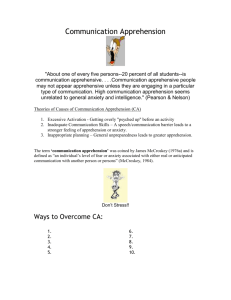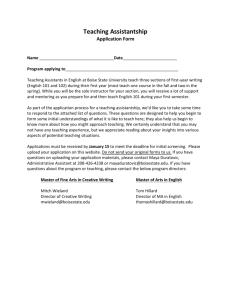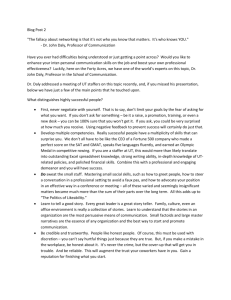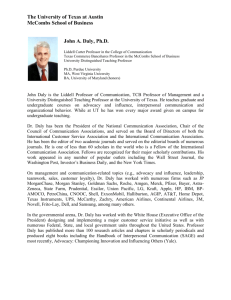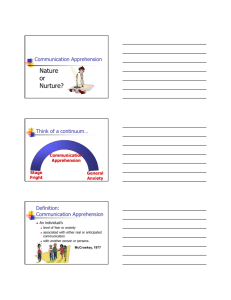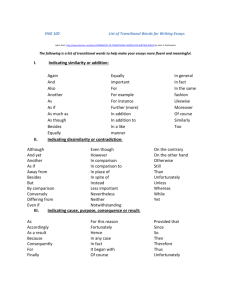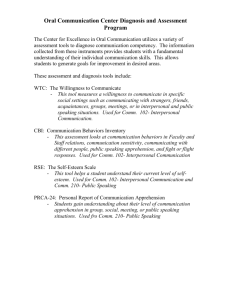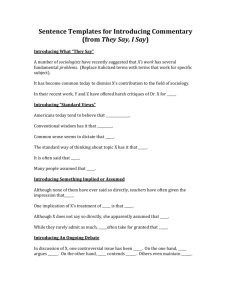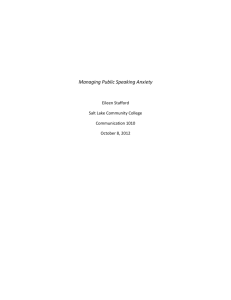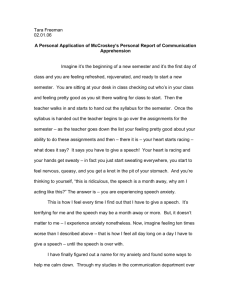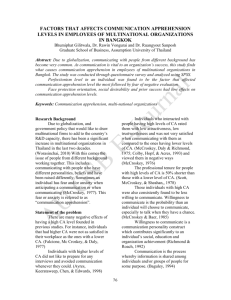Swales & the CARS Model
advertisement
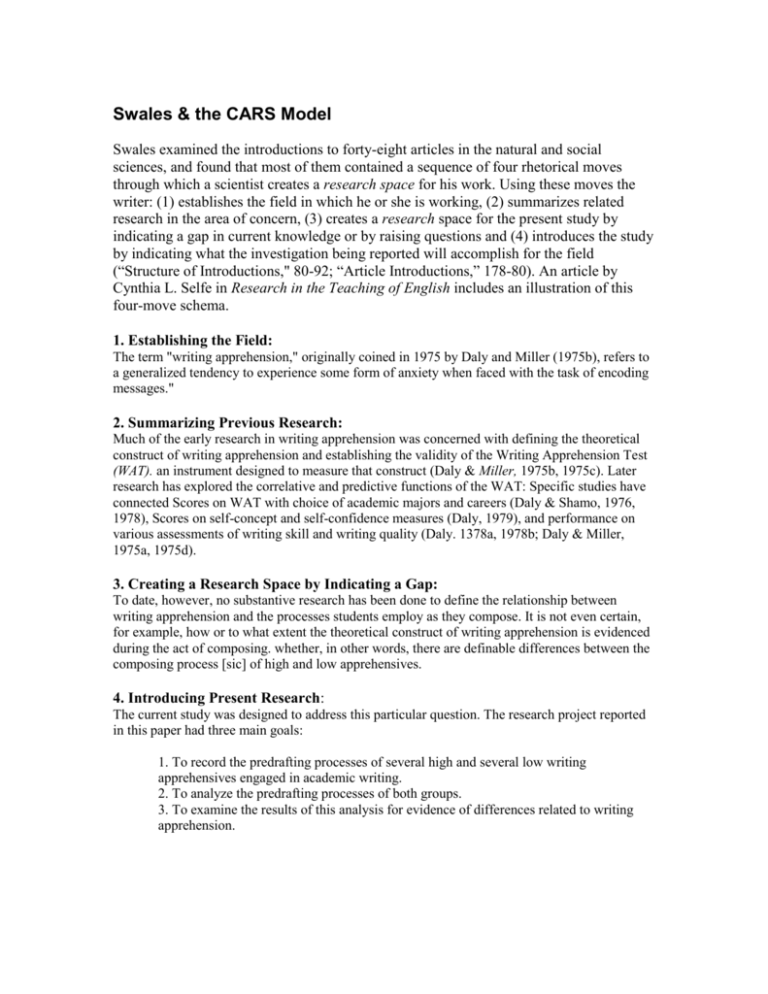
Swales & the CARS Model Swales examined the introductions to forty-eight articles in the natural and social sciences, and found that most of them contained a sequence of four rhetorical moves through which a scientist creates a research space for his work. Using these moves the writer: (1) establishes the field in which he or she is working, (2) summarizes related research in the area of concern, (3) creates a research space for the present study by indicating a gap in current knowledge or by raising questions and (4) introduces the study by indicating what the investigation being reported will accomplish for the field (“Structure of Introductions," 80-92; “Article Introductions,” 178-80). An article by Cynthia L. Selfe in Research in the Teaching of English includes an illustration of this four-move schema. 1. Establishing the Field: The term "writing apprehension," originally coined in 1975 by Daly and Miller (1975b), refers to a generalized tendency to experience some form of anxiety when faced with the task of encoding messages." 2. Summarizing Previous Research: Much of the early research in writing apprehension was concerned with defining the theoretical construct of writing apprehension and establishing the validity of the Writing Apprehension Test (WAT). an instrument designed to measure that construct (Daly & Miller, 1975b, 1975c). Later research has explored the correlative and predictive functions of the WAT: Specific studies have connected Scores on WAT with choice of academic majors and careers (Daly & Shamo, 1976, 1978), Scores on self-concept and self-confidence measures (Daly, 1979), and performance on various assessments of writing skill and writing quality (Daly. 1378a, 1978b; Daly & Miller, 1975a, 1975d). 3. Creating a Research Space by Indicating a Gap: To date, however, no substantive research has been done to define the relationship between writing apprehension and the processes students employ as they compose. It is not even certain, for example, how or to what extent the theoretical construct of writing apprehension is evidenced during the act of composing. whether, in other words, there are definable differences between the composing process [sic] of high and low apprehensives. 4. Introducing Present Research: The current study was designed to address this particular question. The research project reported in this paper had three main goals: 1. To record the predrafting processes of several high and several low writing apprehensives engaged in academic writing. 2. To analyze the predrafting processes of both groups. 3. To examine the results of this analysis for evidence of differences related to writing apprehension. Swales’ Model of Rhetorical Moves in Research Articles (CARS) The Create A Research Space (CARS) Model, by John Swales Move 1 Establishing a territory Step 1 Claiming centrality and/or Step 2 Making topic generalization(s) and/or Step 3 Reviewing items of previous research Move 2 Establishing a niche Step 1A Counter-claiming or Step 1B Indicating a gap or Step 1C Question-raising or Step 1D Continuing a tradition Move 3 Occupying the niche Step 1A Outlining purposes or Step 1B Announcing present research Step 2 Announcing principal findings Step 3 Indicating Research Article structure Dudley-Evans Model of the Moves Identifiable in Master’s Theses1 Move 1: Move 2: Move 3: Move 4: Introducing the Field. Introducing the General Topic (within the Field) Introducing the Particular Topic (within the General Topic) Defining the Scope of the Particular Topic by: (i) introducing research parameters (ii) summarizing previous research Move 5: Preparing for Present Research by: (i) indicating a gap in previous research. (ii) indicating a possible extension of previous research Move 6: Introducing Present Research by: (i) stating the aim of the research or (ii) describing briefly the work carried out (iii) justifying the research. 1 A Six-move schema of rhetorical moves for master’s theses in scientific fields (Dudley-Evans, 1986)
